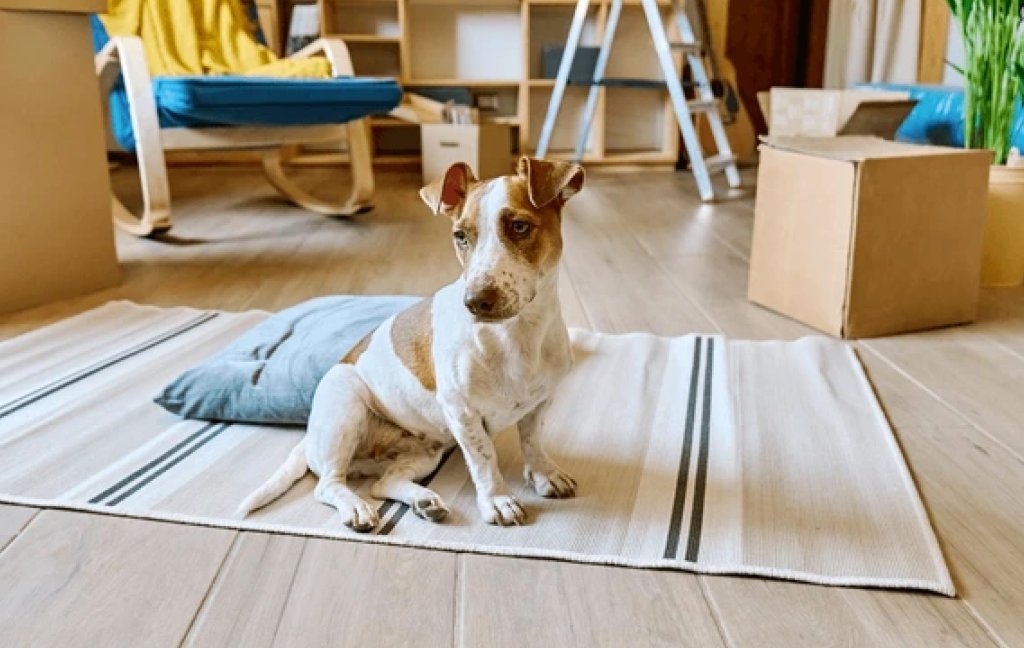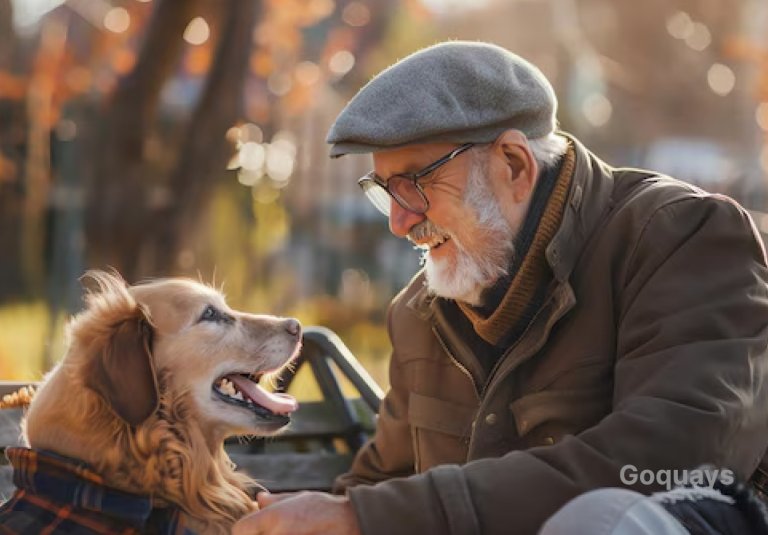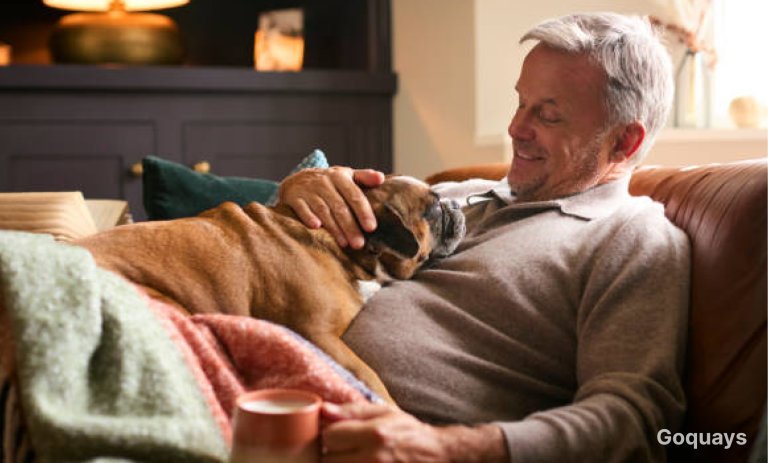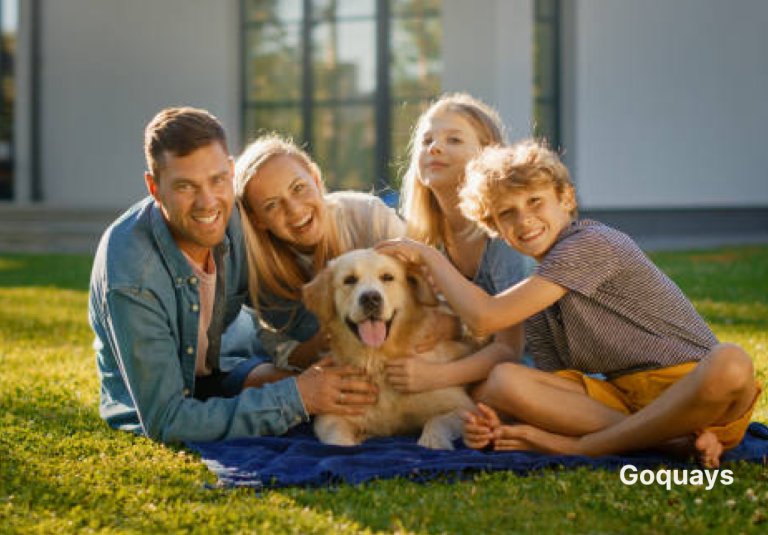Bringing a puppy home is exciting, but house training your pets can feel overwhelming at first. Don’t worry, it’s all part of the journey. According to a 2024 UK pet survey, over 80% of dog owners said toilet training was their top challenge during the first three months. As a dog owner, learning how to toilet train a puppy is an important skill for you and your pup.
Puppies don’t come with built-in toilet manners. Just like babies, they need time to figure out when and where to go. Research shows that most puppies can be fully toilet trained between 4 to 6 months. Some may take longer, especially if routines are inconsistent.
The goal is to help your puppy understand that going outside is the right choice. It takes repetition, rewards, and calm guidance. Don’t expect perfection overnight. Accidents will happen, but each one is a learning opportunity for your pup and you.
“Training isn’t about control. It’s about communication and trust,” says dog trainer Victoria Stilwell. And that’s exactly what toilet training builds, a trusting bond between you and your dog.
The good news is, puppies learn fast when you’re consistent and clear. With the right steps, your puppy will soon know where to go and feel proud doing it. You’ll also enjoy a cleaner, calmer home.
In this guide, you’ll learn how to spot the signs, create a routine, handle accidents, and avoid common mistakes. Whether you’re a first-time puppy parent or just need a refresher, you’ll find everything you need to toilet train your dog confidently.
Ready to start? Let’s get into the practical steps and real-life solutions that make house training work.
Toilet Training Steps
Toilet training a puppy might seem like a big job, but once you follow the right steps, it becomes a lot more manageable. Puppies don’t come knowing where to go, but with a clear routine and lots of praise, they learn fast.
Step 1 – Look Out for the Signs They Need the Toilet
- Watch for sniffing, circling, whining, or heading to the door.
- Puppies often need the toilet after eating, drinking, sleeping, or playing.
- Keep your puppy in sight. Use baby gates or a crate when you can’t supervise.
- Respond quickly when you notice the signs. Take them outside immediately.
- The faster you respond, the faster they learn what’s expected.
Step 2 – Figure Out Where Is Best for Them to Go
- Choose a consistent toilet spot outdoors that’s easy to reach.
- For flats, consider a grass pad or balcony setup.
- Avoid noisy, high-traffic areas to help your puppy focus.
- Always take them to the same spot so the smell reminds them what to do.
- Use a cue phrase like “toilet time” to build the habit.
Step 3 – Establish a Routine
- Take your puppy out after meals, naps, play, and first thing in the morning.
- Stick to a regular schedule, puppies thrive on routine.
- Try taking them out every 1–2 hours during the day.
- Use the same phrase each time to help them link the words with the action.
- Routine builds trust and helps avoid accidents.
Step 4 – Making the Routine Stick
- Reward with treats or praise immediately after they finish toileting outside.
- Be consistent with your schedule, even on weekends.
- Expect accidents and clean them quietly without punishment.
- Stay patient. Progress isn’t always linear.
- Celebrate small wins, fewer accidents mean the habit is forming.
How to Toilet Train a Puppy During Winter
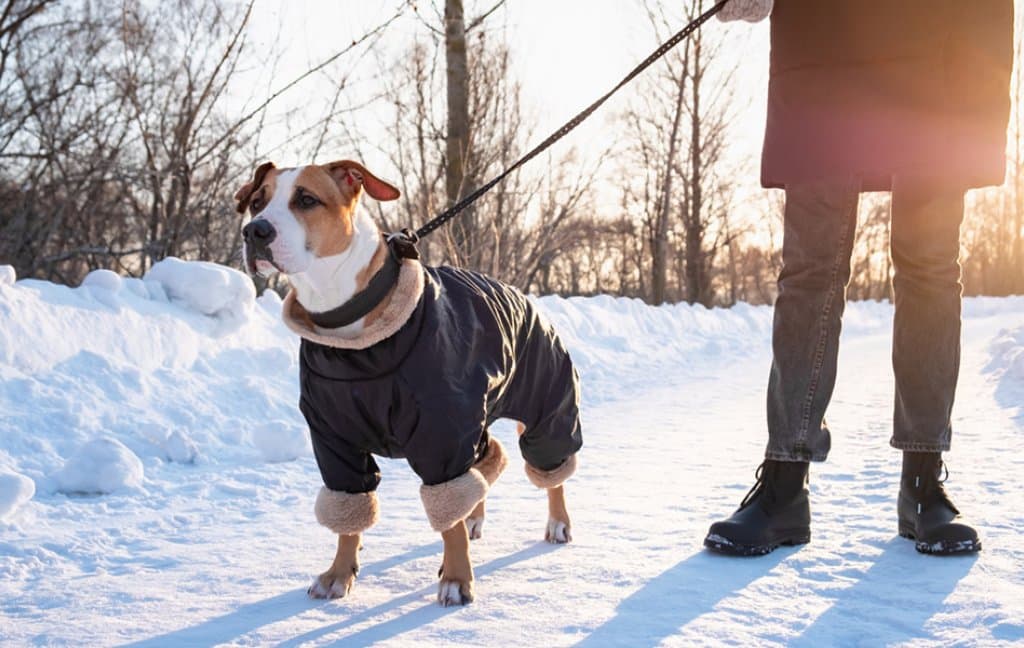
Winter can make toilet training a little harder. Cold winds, rain, or snow might put both you and your puppy off stepping outside. But training must continue.
Dress your puppy for the weather. Small breeds and short-haired dogs feel the cold more, so a warm coat can make all the difference. You could also keep a towel near the door to dry them off after outdoor trips.
Stick to your toilet schedule, even if the weather’s awful. Take your puppy out after naps, meals, and before bedtime. Don’t wait too long, puppies can’t hold it just because it’s snowing.
If your pup is hesitant, carry them outside or to a covered area. Use the same toilet spot every time and reward them immediately after they finish. It’s vital to stay consistent.
Veterinary nurse Helen Richards advises, “Don’t rush them. Stay outside long enough for them to do their business, no matter how cold it gets.”
You can also clear a small patch of grass or shovel snow to create a familiar area. If it’s too icy or dangerous, have a backup toilet option like a turf mat on the balcony, but only as a temporary solution.
A 2022 survey found 62% of dog owners struggled more with training in winter. So if you’re finding it hard, you’re not alone. Just don’t stop. Pausing training now can undo weeks of good progress.
With extra patience, good gear, and a regular schedule, your pup can succeed, even with snow under their paws.
How to Toilet Train a Puppy Without Training Pads
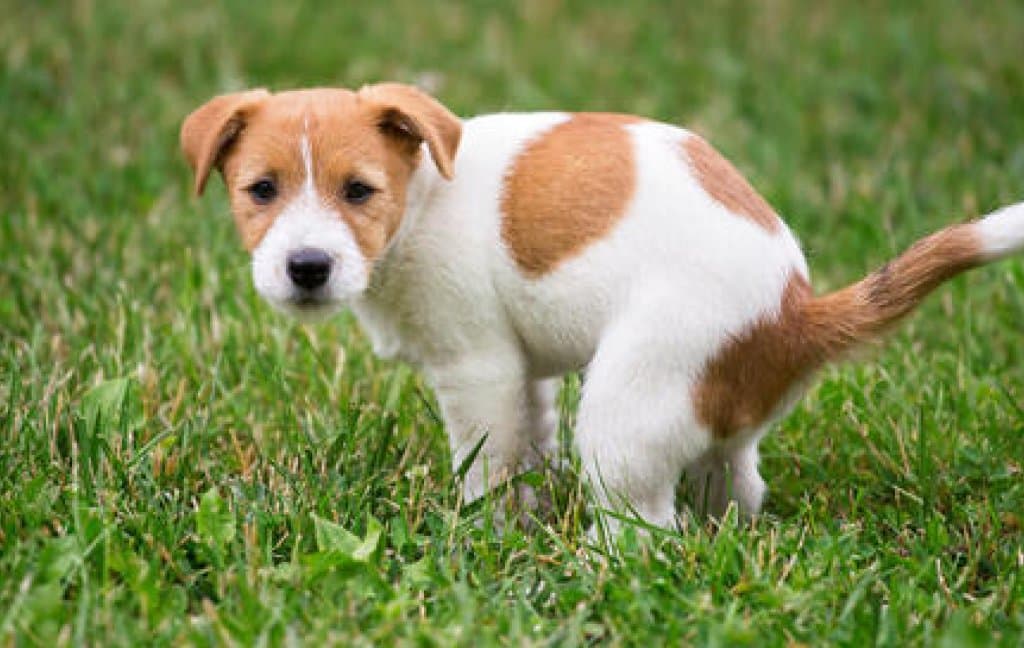
Training pads seem like a quick fix, but many owners prefer to skip them altogether. The good news is you can absolutely toilet train your puppy dog without them.
Going straight to outdoor training helps avoid confusion. Pads teach puppies to go inside first, then outside later, which can be a longer process. If you want your dog to toilet outdoors only, it’s best to start that way.
Begin by taking your puppy outside first thing in the morning, after meals, after naps, and every couple of hours during the day. Use a consistent spot. Praise and reward them right after they go, it reinforces the behaviour you want.
Stay outside until they finish. If nothing happens, come back in but try again in 15 minutes. Puppies often need a few tries before they get it right.
According to a UK dog care survey, 44% of new dog owners found outdoor-only training faster than using pads.
“Consistency is everything in toilet training,” says trainer Emily Drew. “When dogs know what to expect, they learn faster.”
Accidents will happen, so be patient. Clean any mess indoors with an enzymatic cleaner to remove smells. Otherwise, your puppy might go back to the same spot.
Skipping pads saves you money and avoids habits you’ll later have to un-train. It’s more work early on, but the long-term payoff is a pup who knows exactly where to go, outside.
How to Toilet Train a Puppy When You Work Full-Time
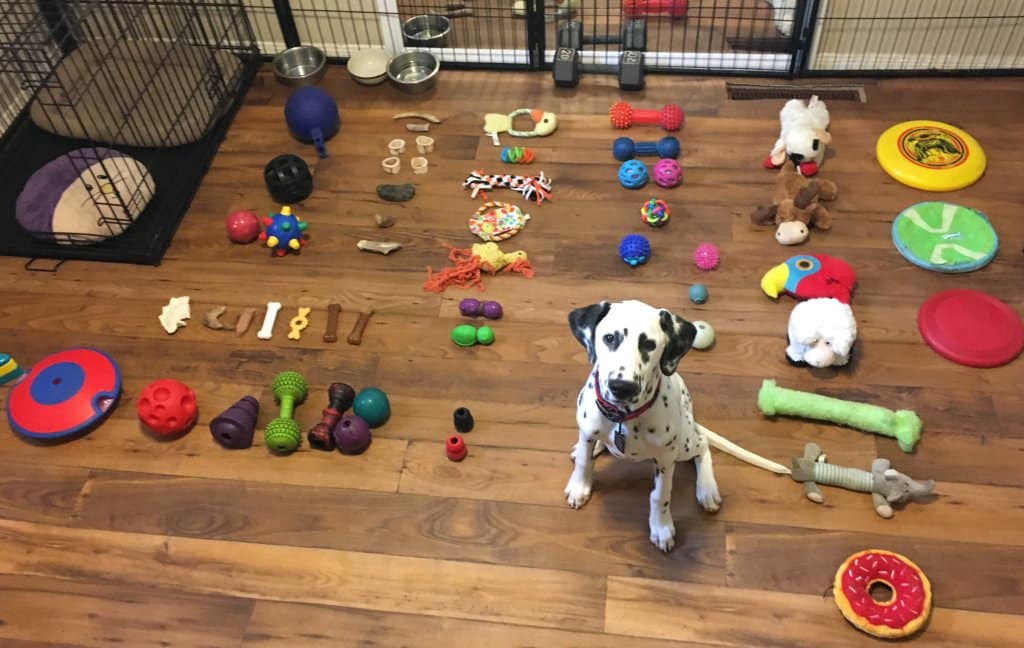
Working full-time makes toilet training more challenging, but it’s still very possible. You just need a plan and some support.
Puppies under six months can’t hold their bladder all day. If you’re out for more than four hours, arrange help. A trusted friend, neighbour, or professional dog walker can take your puppy out midday.
Set up a clear schedule for morning and evening. Take your puppy out first thing, again before you leave, right when you get home, and before bed. Stick to the same routine each day.
During the day, if no one can help, you may need a safe space indoors like a pen with a toilet tray or real-grass pad. But use this as a backup, not a long-term solution.
Research from The Pet Food Manufacturers’ Association found that 33% of UK puppy owners hire a sitter during the first months of training.
Trainer Olivia Ford adds, “Toilet training is about timing. You can’t train a puppy if you’re not there when they need to go.”
Evening and weekend consistency matters. Make those moments count by reinforcing outdoor toileting. Praise and reward immediately.
With planning, your pup can learn great habits, even if you’re at work from nine to five. And once they’re older, their bladder control improves, and the training gets much easier.
How to Toilet Train a Puppy After 6 Months
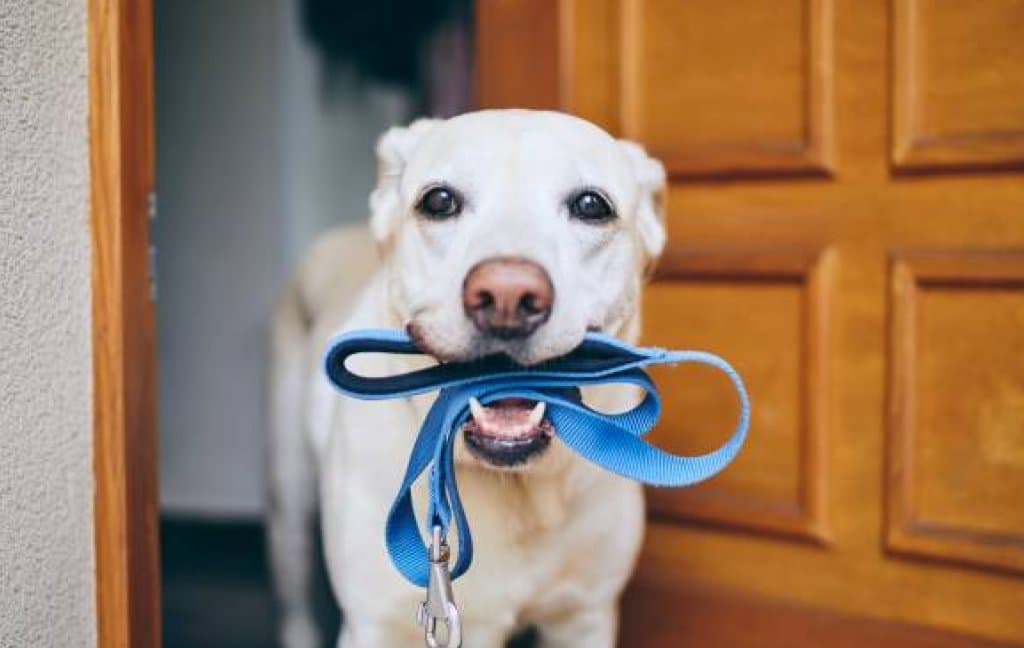
If your puppy is already six months or older, don’t worry. You can still teach them good toilet habits with a gentle, consistent approach.
Older puppies may have formed routines, some helpful, others not. If they’ve been toileting indoors, you’ll need to start fresh. Treat them like a younger pup and go back to basics.
Set a clear routine. Take your dog out first thing in the morning, after meals, naps, and every few hours. Use a consistent spot and reward them immediately when they go.
Avoid punishment for accidents. Instead, clean up quickly with a product that removes smells completely. That helps prevent repeat accidents in the same place.
“Dogs of any age can learn new habits,” says canine behaviour expert Jane Thomas. “But it takes time, patience, and lots of praise.”
Watch your dog closely for signs like sniffing or circling. Take them out right away when you see them. Create positive associations with outdoor toileting using treats and praise.
A 2023 survey showed that 27% of dog owners didn’t start proper toilet training until after six months. So it’s never too late.
If you’re consistent, patient, and kind, your older puppy can unlearn bad habits and become fully toilet trained. Start today, and stick with it.
How to Toilet Train a Puppy Dog That Keeps Having Accidents

Accidents are normal during toilet training, especially in the early weeks. If your puppy keeps having accidents, it doesn’t mean they’re not learning, it just means something in your routine may need adjusting.
First, make sure your puppy is going outside often enough. Puppies need regular toilet breaks, after waking up, eating, playing, and every couple of hours. If you’re missing those windows, accidents are more likely.
Also, learn to spot early signs like sniffing, pacing, or circling. That’s your cue to take them out immediately. If they go indoors, calmly clean it up with an enzymatic cleaner to remove the scent and prevent repeat accidents.
Don’t punish your puppy. That only confuses them. Instead, reward them the second they toilet in the right place. Timing is everything.
Sometimes accidents happen because your pup is overstimulated or hasn’t learned bladder control yet. Be patient. According to a 2022 UK puppy survey, 59% of owners said their pups had regular accidents during the first two months of training.
“Accidents aren’t a failure, they’re feedback,” says dog trainer Harriet Allen. “They show us where to adjust the routine.”
If your pup always toilets in the same indoor spot, block it off or change the scent. Keep them supervised or use a crate when you can’t watch them closely.
Track their progress over a week. Are there accidents at certain times? Once you see the pattern, you can adjust the schedule.
Toilet training takes time. But with consistency, supervision, and positive reinforcement, the accidents will start to fade, and your pup will learn what’s expected.
How to Toilet Train a Puppy Dog at Night
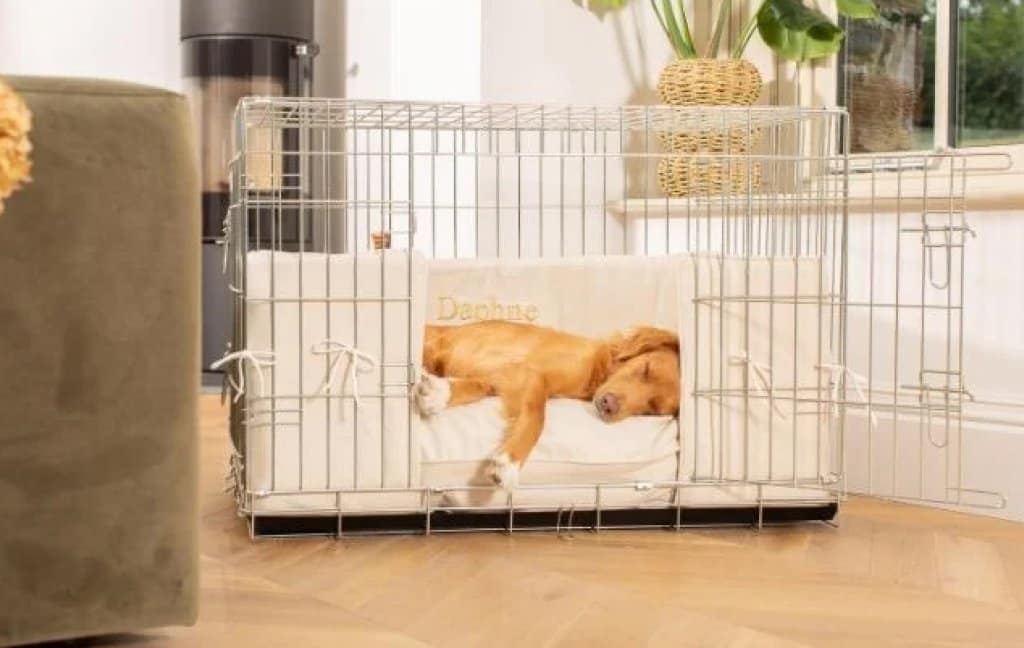
Night-time toilet training takes a bit more patience than daytime, but it’s completely manageable with a calm routine.
Young puppies can’t hold their bladder all night. Most need at least one toilet break between bedtime and morning, especially during the first few weeks. Try setting an alarm for four to five hours after you both go to bed.
Place your puppy’s bed close to you at night, either in your room or a quiet spot nearby. That way, you can hear them if they stir, whine, or move around signs they need to go out.
Keep night trips outside quiet and low-energy. Don’t play or talk much, just let them do their business, praise gently, and go back to bed. This keeps things focused on toileting, not playtime.
According to a UK veterinary survey, 72% of puppies trained at night learned to sleep through by the time they were five months old.
“Night-time training is about building trust and routine,” says canine behaviourist Lorna Hughes. “It reassures your puppy that you’re always there when they need you.”
If you’re using a crate, make sure it’s the right size, just big enough to stand up and turn around. Dogs don’t like to toilet where they sleep, so this encourages them to hold it.
Limit water about an hour before bedtime and ensure your pup goes out just before sleep. Stick to a bedtime routine, puppies love structure.
With gentle night-time support and consistency, your puppy will learn to wait until morning—and you’ll both get more sleep soon.
Conclusion
Toilet training isn’t always smooth but it gets easier with time, patience, and a routine that fits your life. The more consistent you are, the faster your puppy will learn where to go.
Remember to praise every success and clean up every accident calmly. Puppies don’t misbehave to annoy you, they just haven’t learned the rules yet.
Whether you’re training in a flat, during cold nights, or while working full-time, you now know how to toilet train a puppy dog with confidence. Stick to the tips in this guide and trust the process.
Your floors will thank you. And so will your dog.

